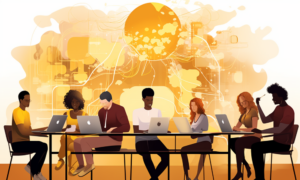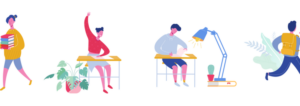Have your learners forgotten how to learn?
- 3 Min Read
The good news is, there’s something you can do about it. And, that’s teaching your learners how to learn. You can do this by introducing new strategies and tactics which actually help your learners to understand how they learn and be aware of what works best for them. Helping your learners how to learn can […]
- Author: Stephanie Morgan
- Date published: Jun 11, 2018
- Categories

The good news is, there’s something you can do about it.
And, that’s teaching your learners how to learn. You can do this by introducing new strategies and tactics which actually help your learners to understand how they learn and be aware of what works best for them.
Helping your learners how to learn can introduce a host of benefits for your organisation. It can raise job performance and improve the application of knowledge, skills, and character qualities outside of the context in which the learning took place.
These tactics can also help you move away from ‘push’ learning, as your learners start to take responsibility for their own development, taking you a step closer towards building your perfect learning culture.
So, how do you teach your learners how to learn?
Self-awareness
Introducing tactics for self-awareness amongst your learners can really help them to understand how they learn. When people start to realise how they respond to different types of learning environments (are they visual/note-takers/group or independent learners?) they will be able to harness what works best for them and be more conscious of how they retain information.
In fact, the benefits of being self-aware in a learning environment are vast. Sharon Merriman (University of Georgia, Athens) highlights some of the characteristics of a self-aware adult learner which demonstrates how important self-awareness is in the learning process. A self-aware adult learner:
- Can direct their own learning
- Is problem-centred and interested in immediate application of knowledge, and
- Is internally motivated to learn, rather than externally
Self-reflection
Self-reflection is an effective and efficient way of helping your people to become self-aware adult learners.
Taking time out for self-reflection on a regular basis can have huge benefits for self-development and emotional awareness, which in turn can promote deeper learning for your people.
It’s relatively easy to do, and the Gibbs reflective cycle can provide a clear and straight-forward starting point. (Many other models are available and work equally well!)
- Description – think pragmatically about what happened during the learning process without embellishing with thoughts and feelings.
- Feelings – now consider what were you thinking/feeling, and whether that might have factored into the situation.
- Evaluation – think lists! What did you find good/bad about the learning or learning environment?
- Analysis – what did you learn and how can you start to apply it to your day-to-day work? Did you learn more, less or something different to what you expected?
- Conclusion – think about what could have been done differently to help you get the most out of the learning.
- Action plan – consider all of the above and work out what you will do differently when your next set of learning takes place. How can you get the most out of the learning? What kind of environment do you work best in?
Introducing self-reflection methods and tactics to your learners will help learners to identify their own learning needs, and understand how they learn. The benefits this can have on your business are significant, as it can raise job performance and improve the application of knowledge.
So, it’s well worth adding learning to learn to your L&D strategy, as it will help you move away from ‘push’ learning, as your learners start to take responsibility for their own development, taking you a step closer towards building your perfect learning culture.
Author: Stephanie Morgan, Director of Learning Solutions, Bray Leino Learning








